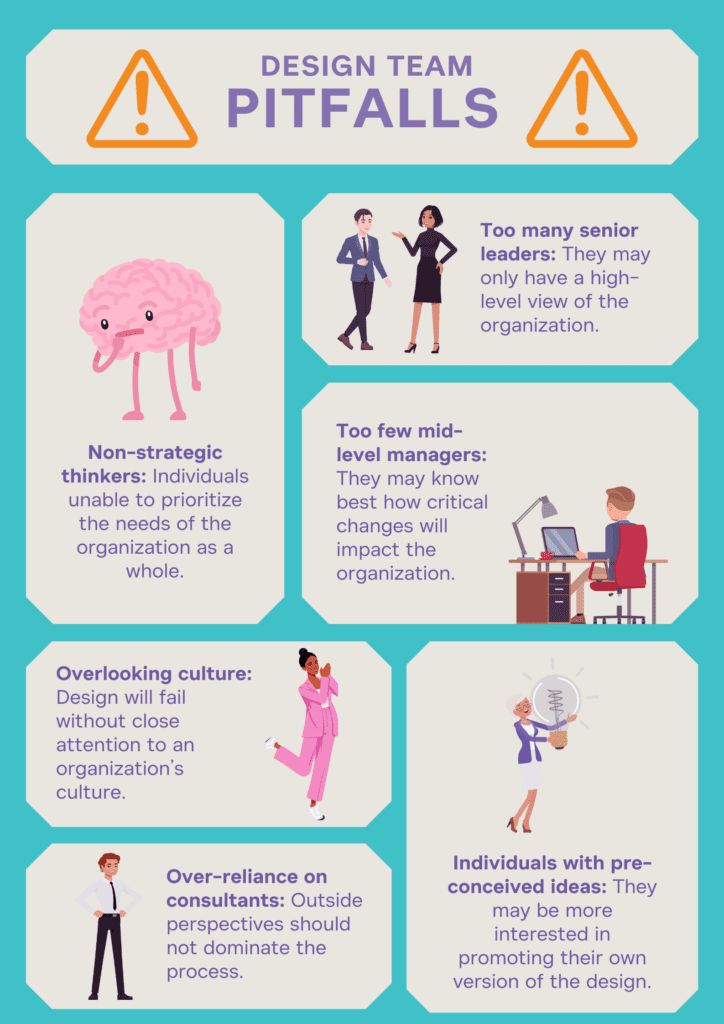Nothing determines the success of any undertaking more than assembling the right team. A design team should include people with a range of personal and professional attributes who can add fresh perspectives. Each member should bring sound analytical, technical, and interpersonal skills to the table that enable them to strategically evaluate each viewpoint.
Making sure the right people are involved is the first step towards a favorable outcome. But even with a dream team, there are always potential pitfalls. Here are some suggestions on who should be on your design team – and what to watch out for once they’re on board.
Who Should Be Involved in the Design Team?
Stakeholders
In the beginning of the process, before you even begin design, start with your stakeholders. Interviews, voice of customer data, and other sources of information that stakeholders hold can be helpful to the design process. If your project is at an enterprise level, customers are most likely your most important stakeholders. If you focus on a company function (such as HR), it is more helpful to conduct interviews with and gather data from the people who work in those functions and their business partners. Reach out to each stakeholder to find out what they believe currently works well and what’s not working. This feedback should capture stakeholders’ views of how things are going.
Executive leadership
Whether you are engaging company-level executives or the leaders of a function, leaders need to provide details about the strategic direction and vision for the overall organizations. You can make sure organization design aligns with those strategies by asking such questions as: What we going to achieve? How are we going to win in marketplace?
If executives are in the design sessions, they should be full participants but should not have a disproportionate voice. The design team might ask them to make a decision but otherwise, they should operate as just another participant, regardless of title or rank.
Additional members of the design team
Include mid-level managers and functional/business leaders. The people who are closest to the work can provide valuable input into the detailed design. They have insights into the marketplaces where they compete. They can share detailed knowledge about products they support, legal/regulatory constraints, cultural differences across of the organization, and other issues that will affect design.
HR and project managers
Involving human resources business partners, project managers, and change management resources helps ensure that the decisions being made during the design sessions are executed correctly on the backend. Their goal should be to listen closely during the sessions and offer advice on such topics as how union contracts affected the proposed changes. This will help significantly with messaging, execution, and timelines as the changes are rolled out.
These resources should not merely come into play after design. They need to be part of design team so they understand how and why the decisions were made. Otherwise, their lack of understanding can make it difficult to decide what change messages they need to communicate to the organization.
Potential Design Team Pitfalls
Even when you have the right players with the proper skills and broad perspectives, snags may develop during the organization design process. Here are some of the common challenges we encounter.

Non-strategic thinkers
You want systemic and strategic thinkers in your design sessions. Watch out for individuals who are so focused on the needs of the areas they represent that they may be unable to view the entire organization when making choices. This can lead to decision paralysis when people jockey for their own individual area rather than thinking about the bigger picture.
Too many senior leaders
When only people at highs level are involved, you may not capture all the relevant perspectives across the organization. Senior executives focus on high-level views, so they may not know all the detailed work that takes place.
Lack of mid-level managers
While mid-level managers may not have decision-making rights, they typically have direct oversight over how critical changes affect the organization. Their team involvement goes beyond providing knowledge that helps ensure optimal design. They can also help communicate the change because they will likely be the key people who help message the change to team members and individual contributors.
Individuals with pre-conceived ideas of what the design should look like
These folks see design sessions as providing the ideal platform to promote their own design for the organization, rather than helping to co-creating the design for everyone. This could be a senior leader who brings team together and says, “I already know what we need to do; I just need you to rubber stamp it.” Or it could be another team member who drafts an org chart on her own and says, “This is what I think we need to do.”
Overlooking culture and communication needs
Sometimes people assume that changing structure will make everything else turn out fine. But that’s not really the case. Team members need to think about the organization’s culture, its communication systems, and so forth. Ensure you have people who can help bring all of these perspectives into the room. You really don’t want smart people who are great at organization design but who fail to understand the culture and communication needs.
Over-reliance on external consultants
Consultants can offer valuable perspective and provide a useful structure for team decision making. They should help the team move forward and bring different perspectives they gather from other organizations. However, they shouldn’t be the ones making the decisions or dominating the process. The design process should be led by internal leaders who know the organization, culture and business goals.
Assembling the Right Design Team Can Contribute to Redesign Success
When you bring the right people together to address your organization’s needs and keep them focused on addressing the greater good, you’ll increase your odds of delivering a successful outcome.





